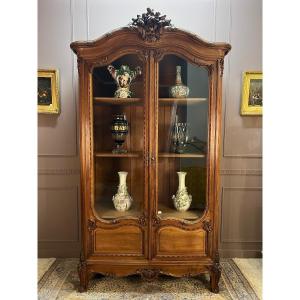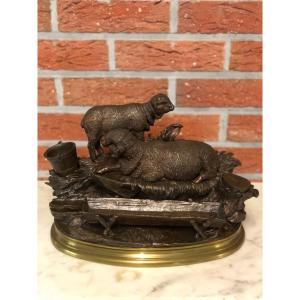Guillaume Grohé (1808-1885)
Guillaume Grohé born in the Grand Duchy of Hesse-Darmstadt came around 1827 to settle in Paris. With his brother Jean-Michel, he successfully managed a house “Grohé Frères” offering furniture and works of art and successfully presented works at the Exhibition of Industrial Products in 1834. His success was just as rapid than considerable. He was awarded the Legion of Honor in 1849, and was subsequently promoted to officer of this order. In 1861, his brother retired from business, leaving Guillaume alone at the head of the company. Having no successor, the company began its activity in 1884. In a few years he became one of the main cabinetmakers of his time. Supplier to King Louis XVIII (Louis Saint-Cloud, 1855; numerous mahogany furniture, Palais de Compiègne; mahogany furniture in Renaissance style, Palais de Fontainebleau, 1859), and after 1862, of Queen Victoria. Specializing in the manufacture of stylish furniture, the Duke of Aumale entrusted him with the furnishing of the Château de Chantilly, and Mme Pelouze, that of the Château de Chenonceaux. He participated brilliantly and was on several occasions a member of the jury at Universal Exhibitions. According to the report of the jury of the Universal Exhibition of Paris in 1878, Grohé is described as being "the undisputed master of modern cabinetmaking, we have exhausted all forms of praise for him, as he exhausted all series of rewards. Maxime Boucheron finally cites in an article in Le Figaro in 1884 that “Grohé was a true great master of artistic cabinetmaking of the 19th century. A career spanning more than fifty years has filled our museums and our national palaces with incomparable masterpieces. It ensured the preponderance of French taste in luxury furnishings.














































 Le Magazine de PROANTIC
Le Magazine de PROANTIC TRÉSORS Magazine
TRÉSORS Magazine Rivista Artiquariato
Rivista Artiquariato